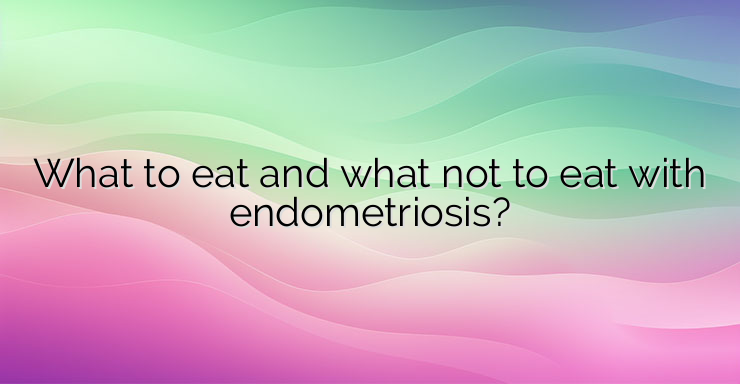1. What is endometriosis? Endometriosis is a common gynecological disease. In endometriosis, tissue similar to that which makes up the inside of the uterus grows outside of it and covers other organs in the pelvic floor. When endometriosis tissue covers the ovaries, endometriosis cysts (chocolate cysts) form. It can also lead to adhesions in a more advanced stage. 2. What are the symptoms of endometriosis? The most pronounced symptom is pain. It intensifies during menstrual bleeding. In addition to low down in the abdomen, the pain can be localized to the back and limbs. It is possible to feel pain during intercourse or after it, as well as bleeding that is outside of menstrual bleeding. Women with endometriosis also complain of nausea, bloating accompanied by constipation or diarrhea, as well as frequent and easy fatigue. With endometriosis, attempts to have a baby are unsuccessful. 3. Which foods have a negative effect on the body in the presence of endometriosis? There are foods that increase the risk of developing endometriosis. Foods high in trans fats are thought to be unsuitable for women with endometriosis and should be avoided. These are found in patties and pasta snacks, hamburgers, biscuits, waffles, pastas, cakes, popcorn, corn sticks, sometimes fried potatoes also contain them. Some research has linked an increased risk of developing endometriosis to consuming large amounts of red meat. It can be replaced with fish, chicken, soy products (tofu), seitan, etc. Alcohol and caffeine are believed to exacerbate the condition. In a study involving over 200 women with endometriosis, it was found that in 75% of them, after removing gluten from their diet, abdominal pain and bloating decreased 4. Which foods have a beneficial effect? Foods that can have a better effect on health are: Iron-rich foods such as legumes – beans, soybeans, chickpeas, beans; nuts and seeds; dark leafy vegetables – kale, spinach, broccoli, cabbage, etc.; Foods rich in essential fatty acids and omega 3, such as sardines, trout, salmon, herring, as well as swordfish, anchovies, oysters and clams, nori (seaweed), flax seeds, chia, pumpkin and hemp seeds, canola oil , eggs, walnuts, etc. Foods rich in antioxidants – dark chocolate, oranges, blueberries, blackberries, strawberries, raspberries, beets, spinach, etc.; Foods rich in vitamin D – salmon, mackerel, mushrooms treated with ultraviolet rays, egg yolks, cheese, cereals, etc. Vitamin D intake can be done, apart from food and by exposure to sunlight, or intake of vitamin D drops from natural raw materials. Low levels of vitamin D are associated with a higher risk of developing endometriosis, and it has been shown to have an antioxidant and anti-inflammatory effect on the body. You could also consider consulting a nutritionist, who will prepare a suitable diet according to the individual characteristics of the body. References: https://www.mayoclinic.org/diseases-conditions/endometriosis/symptoms-causes/syc-20354656 https://www.healthline.com/health/endometriosis/endometriosis-diet#foods-to-eat https://www. ncbi.nlm.nih.gov/pmc/articles/PMC9983692/ https://www.bswhealth.com/blog/endometriosis-diet-what-to-eat-if-you-have-endometriosis


Leave a Reply